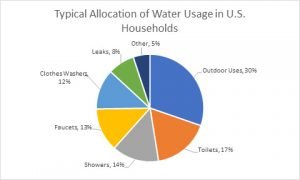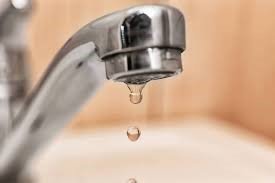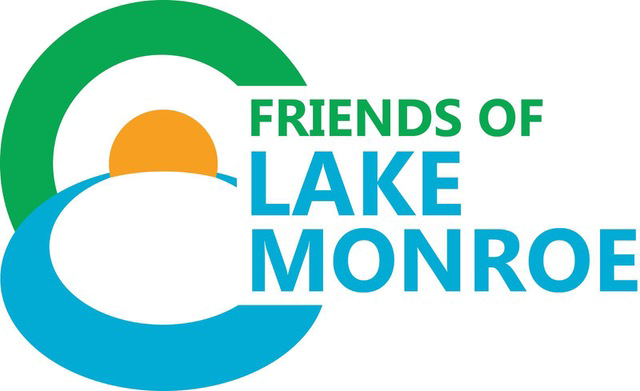Conserving Water Today and For Future Generations
[vc_row][vc_column][vc_column_text css=".vc_custom_1627301759603{margin-bottom: 0px !important;}"]By Richard Harris[/vc_column_text][vc_column_text css=".vc_custom_1627301251494{margin-bottom: 0px !important;}"]Residents of Bloomington and surrounding communities are fortunate to have a reliable drinking water source in Lake Monroe. That hasn’t always been the case. In fact, Bloomington faced water scarcity issues before the construction of Lake Monroe in the mid-1960s. Because we have an abundant and relatively inexpensive water supply, it’s easy to take it for granted. Most of us take showers, brush our teeth, flush the toilet, run the clothes and dish washers, and perhaps turn on the lawn sprinkler without thinking about where the water comes from or where it goes when we’re finished with it.About 120,000 people locally obtain their household water from the City of Bloomington Utilities (CBU), or one of the wholesale providers who purchase water from CBU. Lake Monroe is the sole source of water for CBU, which processes about 15 million gallons of water per day (gpd), and has the capacity to process about 30 million gpd. It may appear from the excess capacity over current usage that there is no need to conserve water in our daily lives. However, as the regional population continues to grow and water demand increases, that excess capacity will shrink and the need may arise for additional water-purification infrastructure at considerable cost to rate payers. The World Resources Institute reported that total water usage in the U.S. grew by 600% in the last 50 years. If that rate of growth continues over the next 50 years, it’s not difficult to understand the importance of conserving our valuable water resource.HOW DO WE USE WATER AROUND THE HOUSE?The National Environmental Education Foundation reports that the average Hoosier uses about 76 gallons of water per day, or a little over 300 gallons for a household of four. About 70% of annual domestic water usage is indoors for standard household use, and 30% is outdoors for irrigation, car washing, etc. Multiply the per capita figure times the number of people in your community, state, or the entire country, and you begin to get an idea of how much water we use and how important it is in our daily lives. Note that this article does not address the large-scale use of water for agriculture and industry since water from Lake Monroe is not used for those purposes to any great extent.The pie chart below shows roughly how domestic water usage is allocated by households in the United States.[/vc_column_text][vc_column_text css=".vc_custom_1627301449761{margin-bottom: 0px !important;}"] Outdoor uses of water (lawn and garden irrigation, car washing, filling swimming pools, etc.) account for about 30% of all water used by the typical American household.Flushing the toilet is the single biggest indoor use of fresh water in most households at 17% of total consumption. The average person flushes the toilet up to five times per day. Older toilets can use 3-5 gallons of water per flush, but federal law mandates that toilets sold in this country since 1993 use no more than 1.6 gallons per flush.Showers are the second biggest indoor use of water in the average household at 14% of the total. The average American shower consumes approximately 17 gallons of water for an eight-minute shower.Next on the list for water usage are faucets at 13% of the total. This includes water for cooking, drinking, brushing of teeth, hand washing, shaving, and other general uses.Clothes washers account for 12% of total water consumption in the U.S. The average American household washes approximately 300 loads of clothes per year, making laundry a prime opportunity for water savings.Water leaks account for an astounding 8% of total water consumption in the average household. This includes dripping faucets, leaky water heaters, and toilet flappers that don’t seal properly. Unfortunately, some leaks are hidden and undetected.Modern dishwashers account for only about 1% of total water consumption and are included in the “other” category.[/vc_column_text][vc_column_text css=".vc_custom_1627301590108{margin-bottom: 0px !important;}"]WATER CONSERVATION TIPSThere are many simple steps that homeowners can take to reduce water intake to both conserve the resource and reduce their water bills.Outdoor Uses— The U.S. EPA estimates that as much as 50% of irrigation water is wasted due to runoff from overwatering, wind, and evaporation. Don’t water in the middle of the day when the sun will evaporate much of the water before it reaches plants. Most landscapes require about an inch of water per week, including rainfall. Place a few empty shallow cans (such as tuna) around the lawn and see how long it takes your sprinkler to fill them with a half-inch of water. Then water for that amount of time twice a week and gauge how your landscape responds and adjust accordingly. If water begins to pool at any point, turn off the sprinklers to avoid overwatering. Skip irrigation cycles or reduce watering if rain is received during the week. Consider using drip irrigation for garden plants, trees, and shrubbery that targets individual plants and uses water more efficiently.Consider planting grass and other plant varieties that are drought tolerant and require less water.Consider taking your car to the local car wash rather than washing in the driveway. Commercial car washes use less water than washing with the garden hose, and many recycle water for additional savings.Toilets—Older toilets can use up to five gallons of water per flush. Federal regulations now require that new toilets sold in this country use no more than 1.6 gallons per flush. High-efficiency toilets can use as little as 1.28 gallons per flush. High-efficiency toilets often have separate flush cycles for liquids and solids to reduce water usage. When it’s time to upgrade your toilet, choose a high-efficiency model. If you have an older toilet, placing an object in the tank, such as a brick or sand-filled plastic bottle, will displace some of the water requiring less to fill the tank.Showers—Federal regulations mandate that new shower heads can’t exceed a flow rate of 2.5 gallons per minute, and some high-efficiency shower heads emit less than two gallons per minute. Consider installing a low-flow shower head to save water. Also consider reducing the amount of time you spend in the shower. The National Environmental Education Foundation found that if 100 million Americans reduced their shower times by one minute, 55 billion gallons of water would be saved every year, saving consumers $500 million in water and energy costs annually. One way to reduce water usage when showering is to take a “navy shower”, a term derived from efforts to save water on naval ships. When showering, take about 20 seconds to thoroughly wet your hair and body, then turn off the water. Lather up your hair and body, then turn the water back on to rinse thoroughly.Faucets—Install low-flow aerators on household faucets. Some aerators can reduce flow to no more than one gallon per minute. Don’t run the faucet continuously when washing hands, hand-washing dishes, shaving, or brushing your teeth. A gallon or more of water is wasted for every minute a faucet is left running unnecessarily. Turn the water on only when needed.Clothes Washing—Older washing machines can use between 35-50 gallons of water per load. Newer front-loading machines typically use between 18-20 gallons per load. Be sure to buy a high-efficiency machine when it’s time to upgrade. Wash clothes only when you have a full load, or if available, select a lower water volume setting for smaller loads. Consider washing your clothes in cold water for additional energy savings.Leaks—Be sure the flap inside the toilet tank seals properly to avoid a toilet that runs unnecessarily. If you hear your toilet filling between flushes, that’s the sign of a leaky flap. Another way to test a toilet for leaks is by placing a small amount of dye or food coloring in the toilet tank. Wait about 15 minutes to see if the coloring has migrated to the bowl. If it has, that’s a sign that the flap needs to be replaced.A faucet that drips once per second can leak up to 2,000 gallons per year. Be sure to fix dripping faucets as soon as the leak is detected.Congratulations!
Outdoor uses of water (lawn and garden irrigation, car washing, filling swimming pools, etc.) account for about 30% of all water used by the typical American household.Flushing the toilet is the single biggest indoor use of fresh water in most households at 17% of total consumption. The average person flushes the toilet up to five times per day. Older toilets can use 3-5 gallons of water per flush, but federal law mandates that toilets sold in this country since 1993 use no more than 1.6 gallons per flush.Showers are the second biggest indoor use of water in the average household at 14% of the total. The average American shower consumes approximately 17 gallons of water for an eight-minute shower.Next on the list for water usage are faucets at 13% of the total. This includes water for cooking, drinking, brushing of teeth, hand washing, shaving, and other general uses.Clothes washers account for 12% of total water consumption in the U.S. The average American household washes approximately 300 loads of clothes per year, making laundry a prime opportunity for water savings.Water leaks account for an astounding 8% of total water consumption in the average household. This includes dripping faucets, leaky water heaters, and toilet flappers that don’t seal properly. Unfortunately, some leaks are hidden and undetected.Modern dishwashers account for only about 1% of total water consumption and are included in the “other” category.[/vc_column_text][vc_column_text css=".vc_custom_1627301590108{margin-bottom: 0px !important;}"]WATER CONSERVATION TIPSThere are many simple steps that homeowners can take to reduce water intake to both conserve the resource and reduce their water bills.Outdoor Uses— The U.S. EPA estimates that as much as 50% of irrigation water is wasted due to runoff from overwatering, wind, and evaporation. Don’t water in the middle of the day when the sun will evaporate much of the water before it reaches plants. Most landscapes require about an inch of water per week, including rainfall. Place a few empty shallow cans (such as tuna) around the lawn and see how long it takes your sprinkler to fill them with a half-inch of water. Then water for that amount of time twice a week and gauge how your landscape responds and adjust accordingly. If water begins to pool at any point, turn off the sprinklers to avoid overwatering. Skip irrigation cycles or reduce watering if rain is received during the week. Consider using drip irrigation for garden plants, trees, and shrubbery that targets individual plants and uses water more efficiently.Consider planting grass and other plant varieties that are drought tolerant and require less water.Consider taking your car to the local car wash rather than washing in the driveway. Commercial car washes use less water than washing with the garden hose, and many recycle water for additional savings.Toilets—Older toilets can use up to five gallons of water per flush. Federal regulations now require that new toilets sold in this country use no more than 1.6 gallons per flush. High-efficiency toilets can use as little as 1.28 gallons per flush. High-efficiency toilets often have separate flush cycles for liquids and solids to reduce water usage. When it’s time to upgrade your toilet, choose a high-efficiency model. If you have an older toilet, placing an object in the tank, such as a brick or sand-filled plastic bottle, will displace some of the water requiring less to fill the tank.Showers—Federal regulations mandate that new shower heads can’t exceed a flow rate of 2.5 gallons per minute, and some high-efficiency shower heads emit less than two gallons per minute. Consider installing a low-flow shower head to save water. Also consider reducing the amount of time you spend in the shower. The National Environmental Education Foundation found that if 100 million Americans reduced their shower times by one minute, 55 billion gallons of water would be saved every year, saving consumers $500 million in water and energy costs annually. One way to reduce water usage when showering is to take a “navy shower”, a term derived from efforts to save water on naval ships. When showering, take about 20 seconds to thoroughly wet your hair and body, then turn off the water. Lather up your hair and body, then turn the water back on to rinse thoroughly.Faucets—Install low-flow aerators on household faucets. Some aerators can reduce flow to no more than one gallon per minute. Don’t run the faucet continuously when washing hands, hand-washing dishes, shaving, or brushing your teeth. A gallon or more of water is wasted for every minute a faucet is left running unnecessarily. Turn the water on only when needed.Clothes Washing—Older washing machines can use between 35-50 gallons of water per load. Newer front-loading machines typically use between 18-20 gallons per load. Be sure to buy a high-efficiency machine when it’s time to upgrade. Wash clothes only when you have a full load, or if available, select a lower water volume setting for smaller loads. Consider washing your clothes in cold water for additional energy savings.Leaks—Be sure the flap inside the toilet tank seals properly to avoid a toilet that runs unnecessarily. If you hear your toilet filling between flushes, that’s the sign of a leaky flap. Another way to test a toilet for leaks is by placing a small amount of dye or food coloring in the toilet tank. Wait about 15 minutes to see if the coloring has migrated to the bowl. If it has, that’s a sign that the flap needs to be replaced.A faucet that drips once per second can leak up to 2,000 gallons per year. Be sure to fix dripping faucets as soon as the leak is detected.Congratulations! As other areas of the country struggle with draught and diminishing water resources, Friends of Lake Monroe thanks you for taking the time to read and consider how you can reduce your water usage. And congratulations for the steps you take to preserve this resource we are fortunate to have in our community.[/vc_column_text][vc_column_text css=".vc_custom_1627301549712{margin-bottom: 0px !important;}"]June Shoreline CleanupIU students Amanda Christophe and Harry Curtis, along with Friends of Lake Monroe Volunteer Coordinator Keith Bobay participated in FLM’s monthly shoreline cleanup at the Paynetown State Recreation Area on June 17th. The monthly cleanups are conducted as part of the DNR’s Adopt-A-Shoreline program at Lake Monroe. To sign up for future cleanups and other events, click on the Events tab on FLM’s webpage at www.friendsoflakemonroe.org.[/vc_column_text][/vc_column][/vc_row]
As other areas of the country struggle with draught and diminishing water resources, Friends of Lake Monroe thanks you for taking the time to read and consider how you can reduce your water usage. And congratulations for the steps you take to preserve this resource we are fortunate to have in our community.[/vc_column_text][vc_column_text css=".vc_custom_1627301549712{margin-bottom: 0px !important;}"]June Shoreline CleanupIU students Amanda Christophe and Harry Curtis, along with Friends of Lake Monroe Volunteer Coordinator Keith Bobay participated in FLM’s monthly shoreline cleanup at the Paynetown State Recreation Area on June 17th. The monthly cleanups are conducted as part of the DNR’s Adopt-A-Shoreline program at Lake Monroe. To sign up for future cleanups and other events, click on the Events tab on FLM’s webpage at www.friendsoflakemonroe.org.[/vc_column_text][/vc_column][/vc_row]
